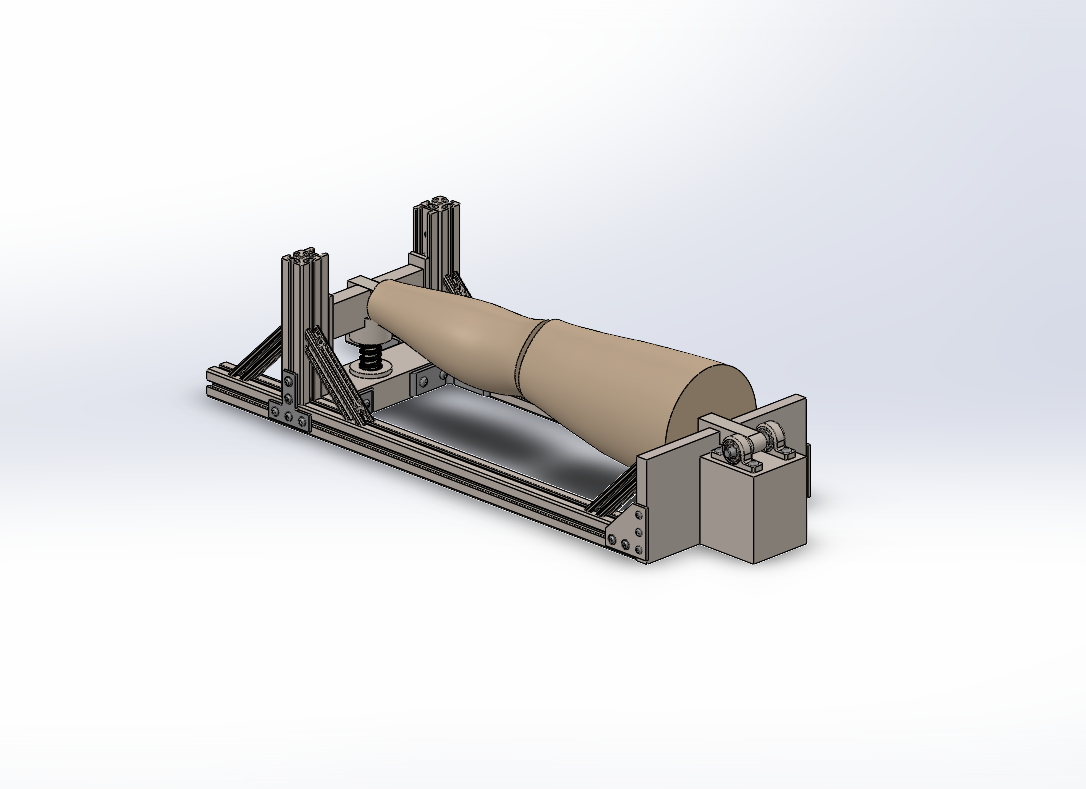
Developing benchtop knee surrogates to objectively test orthotic devices and provide for companies to evaluate the efficacy of knee brace products.
Purpose
Correct Support
Our surrogates ensure targeted support for the entirety of the knee during active movement, and also allows for numerical analysis of the given reinforcement by quantifying the forces.
Customer Comfort
Tailored support means that softer sleeve components can provide similar support to their hard plastic counterparts, thus improving long-term wearability.
Full Range of Product
The continuity of the surrogates means the entire range of product can be tested, from sleeve braces to more robust strap-on models, verifying support in every circumstance.
Point of Failure
The well-researched point of failure means the surrogates represent the average leg, and are functionally equivalent. Now testing is available without using a human subject, improving safety.


Anterior/Posterior (AP)
Marketing
Though our product is not going to be marketed since this project is partnered with Össur, if we were to market our surrogates it would likely be to other companies within the orthotics industry. The knee brace market is projected to be $1.9 billion by 2025. The extensive testing ability of our surrogates can allow companies to refine their product and improve comfort as well as quantifying the support given. Additionally, though there are currently no FDA guidelines regarding the testing of orthotic devices, our surrogates will allow orthotic companies to be ahead of the curve if regulations were to be put in place in the future.
Over time, with further refinement of the surrogates, they will enable companies to expand their product range and differentiate their orthotics to activity level, thus providing only the minimum necessary support and resultantly maximizing comfort. In our case, orthotic companies would be wise to utilize our surrogates to save money and improve safety and comfort where there would otherwise be injury.
Citation: Knee Braces Market Size & Share: Industry Analysis Report, 2019-2026. Knee Braces Market Size & Share | Industry Analysis Report, 2019-2026. (n.d.). Retrieved November 30, 2021.Competitors
We have no true competitors since our product is done in collaboration with Össur, so for the purposes of this section we will be comparing the old surrogate to our new models.
Old Surrogate
- Heavy: consists mainly of aluminum and steel
- Noncontinuous: gap at the knee
- Tests 1 motion (ML)
- Constrained: one spring
- Cannot test sleeve or step-in braces
- Inaccurate leg resistance
- Hard silicone
- Difficult to put on knee braces
New Surrogates
- Lightweight: consists mainly of 3D print and aluminum
- Continuous: silicone wrap
- Tests 3 motions (AP, ML, FH)
- Modular: interchangeable springs
- Tests whole range of orthotics
- Anatomically accurate leg resistance
- Softer silicone more akin to tissue
- Convenient application of orthotic devices
Live Patient Testing
- Unreliable: testing will change for each patient
and is not standardized - Continuous: a real leg
- Tests 3 motions (AP, ML, FH)
- Cannot withstand force of injury
- Can test full range of product
- Most anatomically accurate
- Fitment is most realistic
- Easy to perform tests
- Not the best ethically
Cadaveric Testing
- Degrades over time, meaning testing conditions will vary
- Continuous: a real leg
- Tests all motions
- Injury may destroy cadaver leg, eliminating testing apparatus
- Can test full range of product
- Mostly anatomically accurate
- Fitment is realistic, but less so than live patients
- Easy to test on
Contact
-
Address
Samueli School of Engineering
5200 Engineering Hall
Irvine, CA 92697-2700
-
Phone
(949) 824-4333 -


Special thanks to our mentors Tim McMorrow and Dean Wyckoff at Össur. And an extra special thanks to our professors Dr. Christine King, Dr. William Tang, and Dr. Chris Hoo at the University of California, Irvine.